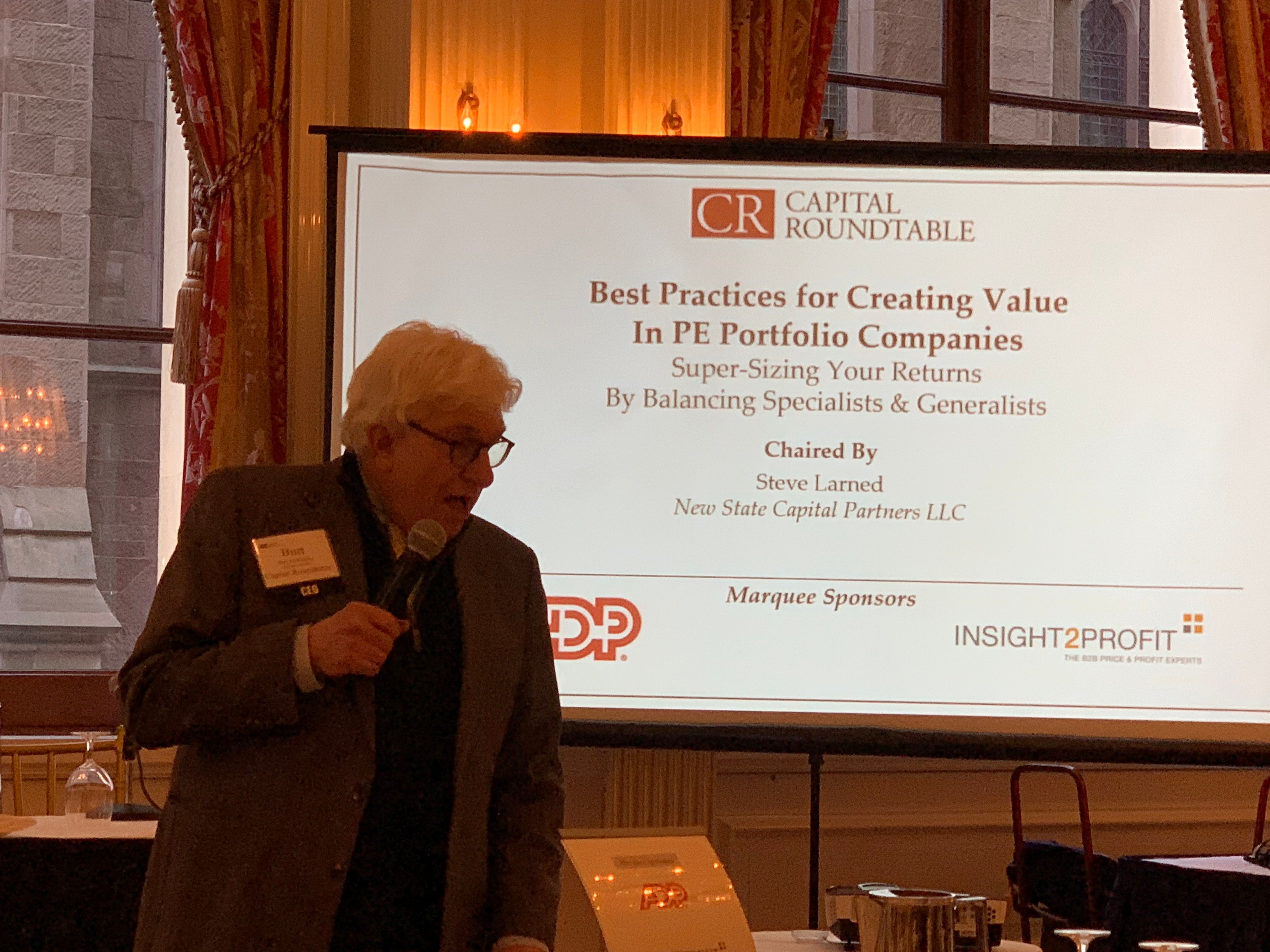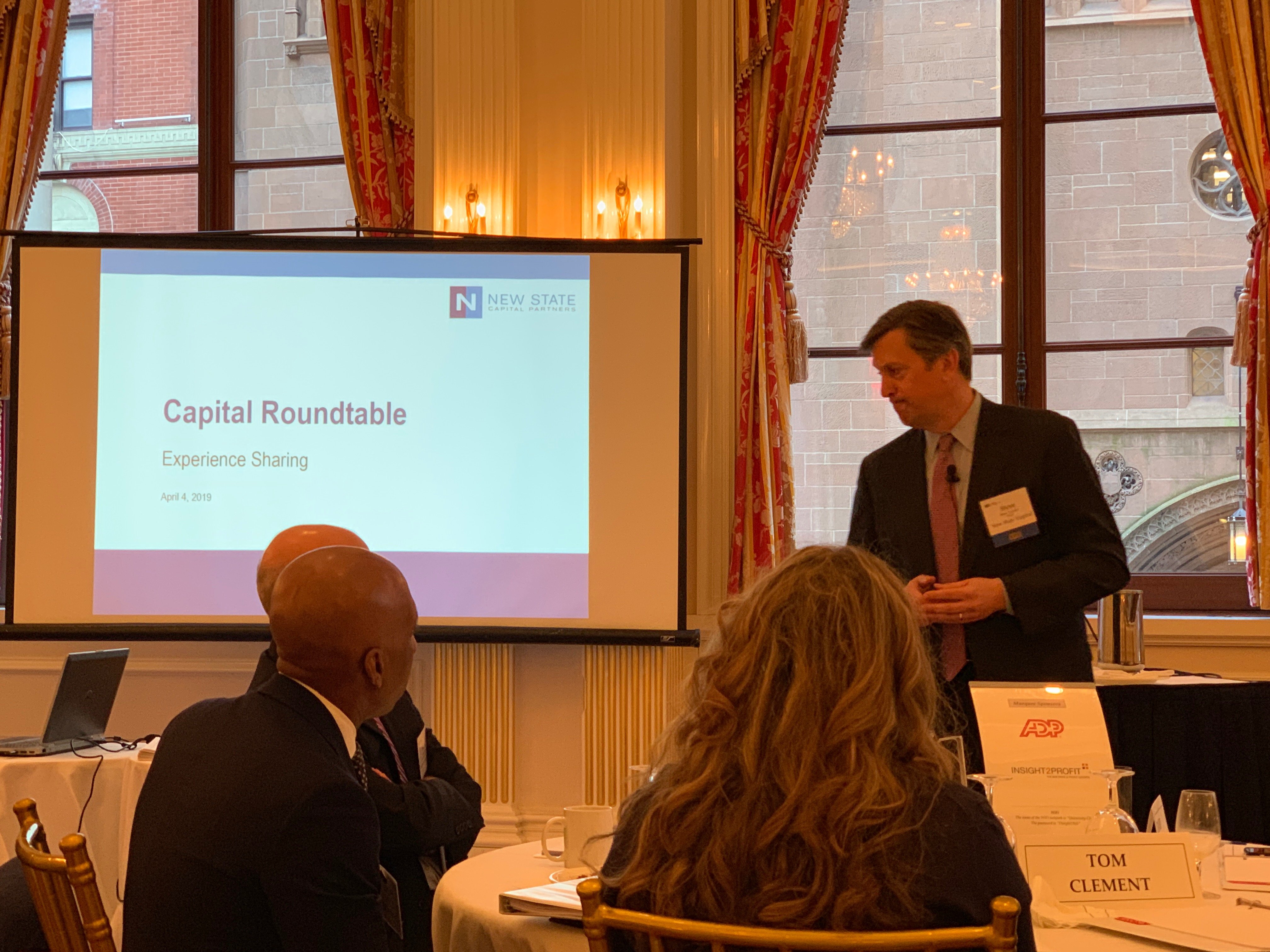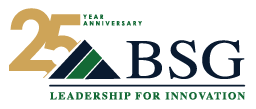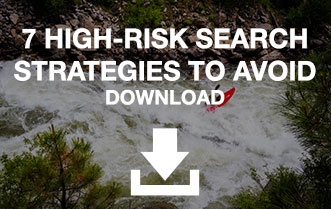BSG Managing Director Clark Waterfall and Partner Lew Weinstein attended Capital Roundtable Master Class "Best Practices for Creating Value In PE Portfolio Companies" on April 4, 2019 in New York City. With a full day of insights from 20 expert speakers, BSG presents the highlights and takeaways gleaned from attending the sessions.

Talk Notes, Steve Larned, Day Chair & Partner, New State Capital
Business realities post-purchase of middle market private equity backed businesses:- Post acquisition, it’s all about transformation across a finite hold period. And this is often a new concept for founder-built businesses with new private equity backers.
- Being direct and specific around direction for new portfolio acquisitions is critical. If not, too much room for misinterpretation and misreads on imperatives and priorities.

Talent Realities & Hurdles
In middle market PE portfolio value creation—“Talent that got you here may not be able to take you there”- It’s important but often very hard convincing a new PE portfolio company CEO that s/he needs to hire a COO who can be groomed to take over in ~3 years. Succession planning is KEY.
- Getting the right leader with the right mix of EQ & IQ can be one of the most potent value creation levers across a hold period for PE portfolio
- In new portfolio acquisitions, taking proactive approach to upskilling the CFO seat, instead of taking a “watchful waiting” approach with historical CFO incumbent
- Making a decision on keeping or topgrading a CEO shouldn’t stretch out more than a year, as that’s often 20% or more of the average PE hold period.
- Too often in private equity today, there are still “reluctant users” in the PE deal team of the operating resource team and the value they can bring to portfolio company value creation. “Old habits die hard...”
Operating Partners & Value Creation
One thing an operating partner should do for value creation?- OP’s indispensable role is to build a financial forecast and tactics supporting it for each co.
- Doing triage on how to staff and implement the value creation team around each individual portfolio company, as each has its own needs and every portco can’t be “same playbook” managed (Jon Weber, Head of Portfolio Company Management for Blue Mountain Capital Management )
- Be a dissonance seeker... have the unpleasant task of introducing challenge, and data driven unpleasant truths (J Weber).
- The best use of an operating partner is as a more holistic part of the fund’s “management”— helping to manage what is invested in and what’s not, not just helping to drive value creation post-deal.” (J. Weber)
- Be progressive with operating partner contribution—focus more on progressive “edgier” areas like the talent equation, predictive performance analytics or similar vs. mature value creation levers like procurement, or offshoring etc that can be serviced by 3rd party specialist providers.
- Areas of operating partner investment in specialization?
- Finance specialization
- IT/transformation (systems)
- Talent
- Generalists who can be capable of identifying the problems in a variety of other functional areas (sales, procurement, pricing, etc.)
Question of the Day
Question in the mind of the acquired management team most important to them, whether voiced or not?“Are you going to back me or not as leader in the next stage of the company under new PE ownership?”
Pearls of Wisdom
- Operating partners are most often deployed when a portfolio company hits an air pocket and there’s risk of even returning a double on the investment
- Middle market companies often have too underdeveloped a set of MIS tools (ERP + other data tracking software) to accurately and in timely fashion collect actionable data for KPI creation, tracking and adherence. The finance function is the most important in driving improvement here.
- It’s as important to create a set of “TTI”s as KPIs (TTI = “Targets to Improve”). And track as frequently and aggressively as KPIs.
- “ROT” (return on time) for operating partner assets may be best invested in the star children in the portfolio vs. the problem children
- Trend has been to use off balance sheet resources and rented specialists (“human cloud”) vs. bulking up W2 owned operating teams, because of the pressure by LPs to not have both “2 & 20” (2% management fees + 20% carry) PLUS valuation creation/operating partner expenses.
- In the panel session “Installing the Lights at the End of the Tunnel” at the Capital Roundtable Conference on PE value creation post acquisition/investment, important comment made— “For ADD-ON acquisitions, it’s really important to assess the culture of platform company, and add-on acquisition to ensure compatibility. Without this pre-assessment, synergies expected often fail to materialize or worse, the add-on completely fails to be accretive.”
- When doing a “merger of equals” there is often a chance to improve pricing because of greater market dominance
- Re-underwrite every portfolio investment at the end of the 2nd year... not just the clunkers of the group. It can be a tremendous re-energizer for the management team, and can unlock strategies that had been deemed “out of reach” and not viable when first the underwriting at acquisition was originally done.
On Engendering Trust Between Operating Partner & Portfolio CEO
- Sophisticated CEOs will lay traps for operating partners early on in the ownership cycle to see exactly what is being funneled back to the deal partners and whether the operating partner can truly be a “trusted advisor.” At times, this demands the ability of an OP to “keep secrets.”
- However, operating partners are not there to be “the friend of the CEO,” or fall prey to “Stockholm Syndrome”...
- Fastest way to build trust? Solve a problem for the CEO
- Second fastest way? Spend time with the portfolio company. Time is often the most precious resource, and when you demonstrate your willingness to invest it on behalf of a portfolio company goes a long way
- Avoid the blame game... one of the fastest ways to ERODE trust between operating partner/PE investor and their portfolio executive team. Attack the problem not the people.
When a Portco Misses Their Numbers
- Attack the problem not the people
- Don’t overreact (or will lose trust/faith)
- What are you going to do about it (Is the recovery plan credible or not?)
- Get information/data/analysis as early as possible in the right hands
4 Big, Controllable Value Creation Levers
- Talent
- Strategy
- Operations
- Management effectiveness
- Given a set of opportunities, how effective is a management team in tackling/capitalizing on these?
- For the first 3 of the 4, what can PE do?
- Operating partners, outside directors, internal specialized experts and/or external consultants (ie for mentoring and support)
- Peer networking and collaboration events for c-level portfolio execs
- Focused tools, best practices (e.g. Six Sigma, lean) and/or “function-specific “playbooks” (e.g. pricing, sales ops, talent planning, etc.)
- Phased, sequenced “value creation program”
- Underneath all of these, there is a “management operating system”. Key ingredients to successful “MOS” = cadences, content, collaboration & commitments.
- Meetings and interactions
- Objectives and KPIs
- Management structure
- Recurring management processes
- Management communications
- Controls & measurement
- Improvement initiatives management style/mode
How to get a programatic “management operating system” adopted across the portfolio
- Assess leadership for “willingness/aptitude/ability to change”
- Offer to pay for all cost to implement/deploy
- Make it part of MBOs tied to executive bonus payouts
- Benefit of putting in an “MOS”? You get much more programatic adherence and visibility into an executive team, instead of investor knee jerk reaction which is “hire to execute.” Exec teams can actually be “trained” to execute with a programmatic MOS as a backbone/road map/guardrails.
Key tips for establishing an MOS
- Do it early, and sell the “WIFM” as at tool for management teams to measure their own progress and avoid surprises.
- Work on the “will”(ingness) to change within the exec team
- And tools for MOS are much less expensive today than 5 years ago.
- Think big, but start small. Prove it out via piloting via early adopters.
- Focus instead on leading indicators vs. lagging (lagging example = KPIs)
- Robust strategic planning, but an equally parallel robust operating plan to support it
- Yearly review
- Adopt a methodology to deploy the strategy
Staging your portfolio companies for Sale—steps for getting full value when you exit
- Revamping the sales team might take 24 months to realize the investment. Doing a sourcing review is faster though shallower IRR.
- Funds that have an “exit committee” inside the GP is looked on favorably by LPs when evaluating PE funds into which to invest. This construct takes some of the pressure/burden off the portfolio executive teams and also allows portfolios to usually eke out any last area of value creation before exiting.
-by
BSG on Apr 11, 2019 4:44:00 PM




